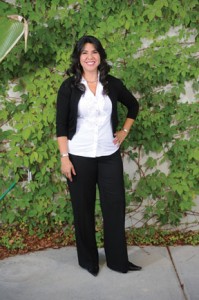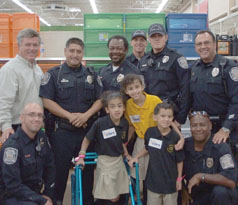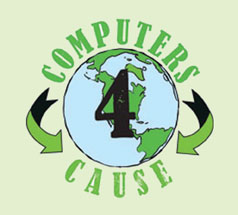Staying the Course…Strategies for Continued Success in School
By Patricia Guth
It seems that one minute we’re celebrating the start of summer, and the next we’re knee deep in school projects and the never-ending battle to find balance between work and play. Now that back-to-school excitement has subsided and routines have become, well, routine, there are several things parents can do to keep their children on that path for success.
Food for Thought
There’s proof that breakfast is the most important meal of the day. A Harvard University/Massachusetts General Hospital study found that students who ate breakfast had improved math grades, reduced hyperactivity, decreased absence and tardy rates, and improved psycho-social behaviors. Yet, 41 percent of kids skip breakfast at least once a week. Be it a nutritious breakfast or lunch, what your child eats is equally important as how much and when. Try these brain food suggestions from the experts.
Eggs and Nuts: Both contain choline, which is known to improve memory function.
Beans, Legumes, Fruits and Veggies: These foods contain brain-boosting antioxidants like vitamins A, C and E.
Tuna: The omega fatty acids in tuna may improve cognitive function, so a tuna sandwich once or twice a week is a good bet.
Whole Grains: One hundred percent whole wheat bread provides energy that can last throughout the school day, especially if consumed at both breakfast and lunch.
Go easy on the sweets! It can be especially challenging during the holidays, but it’s important to stay vigilant about healthy eating habits. Excess sugars in candy and packaged baked goods amp up insulin levels and are used up rapidly, causing sugar crashes that make kids irritable and inattentive.
Rules to Study By
When holiday vacations and visitors derail the brain train, kids are much more likely to get back on track if they’ve become accustomed to certain habits. Now’s the time to reinforce homework and study-related expectations. If you didn’t set them up at the beginning of the school year and find your child having difficulty making time for study, there’s no better time than the present. Be firm if you expect your child to do homework as soon as they arrive home. If they will be given 30 minutes of free time before studying starts, make that clear.
Maintain age appropriate study areas. For younger children, a quiet place at the kitchen table or a desk in the living room to do homework is a good choice. Older kids can study in their bedrooms, but if you find they spend most of their time surfing the web, sending text messages and listening to iTunes, you may have to set usage rules or move their study space into an area you can monitor.
Encourage even younger children to keep careful track of what is due the next day and double check that all the work is complete. Don’t be afraid to ask your child if they need help, but resist the urge to stand over your teens. Part of being a high school student is learning to take responsibility for one’s own work. Experts note that as long as grades show that your older child is doing the work assigned, monitoring is probably not necessary.
A Little R&R
While it’s tempting to crack the proverbial whip and insist your child be a super student, a good night’s sleep is important for children of all ages. A study profiled in a 2005 issue of the journal Sleep noted that children who stay up late have more problems at school. ‘Just staying up late can cause increased academic difficulty and attention problems for otherwise healthy, well-functioning kids,’ reported researcher Gahan Fallone, P.h.D., associate professor at the Forest Institute of Professional Psychology in Springfield, Mo.
Most experts agree that children between the ages of 5 and 10 need approximately 10-11 hours of sleep per day, with older children requiring between 8.5-9 hours. Unfortunately, younger children as well as teens often resist the need to sleep. Teens taking lots of advanced classes are especially susceptible to burnout due to lack of sleep, making it critical for parents to establish an effective sleep and rest ritual. Start by setting regular bed and wake up time, sticking with them as much as possible, even on weekends.
Other strategies for getting the kids to sleep include:
- Begin to lower the lights in your home as bedtime nears, turn off all media sources, including the TV, computers and cell phones and cease doing any vigorous activities.
- About 30 minutes before bedtime, help young children pick up toys and pack their backpack for the next day and get them into their pajamas. After they’ve brushed their teeth, tuck them into bed and read a story or two.
- Encourage teens to take a hot shower and read something pleasurable, aloud or to themselves, or partake in some other calming activity in the hour before bed. Even teens may benefit from being read to.
Whatever ritual you devise, stick to it, even if your child resists at first.
Stay Involved
Sometimes it’s tough to gauge how intrusive you should be when it comes to setting your child on the road to success. While it’s always wise to encourage independent growth for your children, it’s necessary to be a pro-active parent and watch for signs of trouble. Poor grades, emotional outbursts and behavioral problems could all indicate problems with a teacher or peer. If talking with your child doesn’t clear up problematic issues, don’t be afraid to reach out to their teachers, counselors and administrators to help handle any concerns.
Pet Fostering – A Temporary Home for Permanent Well-being
By Ashlee Verba
When 36-year-old Laurie of Missouri discovered fostering, she first asked for a friendly, house-broken dog to keep her Great Dane, Remi, company. Two years later, the self-proclaimed Dog Foster Mom (as she rightfully named her blog) fosters multiple animals at once and has developed a special affection for blind and deaf dogs, one of whom she adopted for her own. Without fostering, Laurie would have never learned she wanted to help deaf dogs. And without people like Laurie, many amazing animals would remain homeless, or worse, get euthanized.
Overcrowding is the most prominent issue facing shelters. Without fostering programs, approximately 4-5 million homeless cats and dogs will be euthanized by the 5,000 shelters that span the nation. Fostering can and does decrease this number by thousands each year. Consider it a life-saving cycle, of sorts.
If you’re the type who loves animals, but don’t necessarily have the means or desire to adopt a pet as a lifelong companion, pet fostering is a way you can save an animal’s life while contributing to their well-being for a short period of time.
Fostering 4-1-1
In the animal world, to foster is to provide a temporary home for domestic pets ranging from cats and dogs to horses and rabbits. A general “foster period” lasts until the animal receives a permanent adoptive home, usually an average of one week to three months, although in some cases it may take up to a year or longer. Younger animals usually get adopted more quickly than older ones, so when gauging how long you may be interested in helping, keep in mind that age is certainly a factor. If a situation were to arise where you simply couldn’t wait for an adoptive family, however, the organization will find a new foster family.
What’s important to remember is that just because fostering is temporary doesn’t mean it is a quick pet fix or a pet ownership trial period. It requires a solid commitment and effort on your part, regardless of time frame. Much like children, bouncing from home to home is never positive for an animal, so please don’t commit yourself unless you’re positive that you are willing and able.
What’s Expected of You
Being ‘able’ stems largely from dedication and consistency; both are important factors in caring for a pet. Before fostering, make sure your lifestyle will allow about three to four hours of free time each day to dedicate to your companion, though more time together is always better. These four hours include feeding the animal and letting it outside two to three times per day, in addition to an hour or two of exercise, ranging largely on the type of animal, breed and socialization. A two year old Chihuahua certainly won’t require the exercise an eight month old Australian Shepherd would. Nor would a Lab pup require the extra training an anti-social Akita might. And cats and rabbits, well, they don’t do well on leashes. These are all very important factors in deciding which type of pet is right for you.
Like adoption, the potential foster parent usually has to fill out an application and, in some cases, have their home surveyed for pet friendliness. If you have other pets at home, a meet-and-greet is required as is proof that your other animals are vaccinated. Other conditions may apply depending on the animal, but the basic protocol is to make sure you and your home are safe, ready and pet friendly, including a positive living environment and ample backyard space for larger breeds. If you are a first-time fosterer, you can find peace in knowing that the organization for which you’re fostering is an excellent resource when it comes to any questions, comments or concerns about whether or not your home is a good fit.
While fostering, you are responsible for providing food, water, shelter, guidance and any necessary veterinary care for the animal. Many organizations provide funding for vet bills, but not all. It is important to be aware of your financial responsibilities before you make the decision to foster.
What You Can Expect
Taking in an unknown animal can yield a lot of apprehension. Will it be mild mannered and trusting or yappy and hyper? The fact is, homeless animals come in all shapes and sizes, ranging from the naïve puppy that knows people only as loving food providers, to the feisty veteran that has had only negative experiences with humans or other animals. You can breathe a sigh of relief that your efforts won’t be taken for granted by an organization handing you a Tasmanian devil and telling you to figure it out.
In addition to providing free pet care and training classes, as well as “counseling” to address any questions or concerns, rescue organizations do their very best to match you with a pet they feel will suit your lifestyle and time limitations. If you have a holiday trip planned six months from now, have no fear; the organization will find you a pet that they feel will be adopted in that time frame. If you’re frigid about your furniture, the organization will match you with a short-haired companion who doesn’t show an interest in chewing. Furthermore, as a foster parent, you can enroll your temporary pal in as many training courses as you’d like; the possibilities really are endless for the lucky pet whose life you’re changing.
New Besties
One particular challenge to fostering for most people is having to say goodbye to the cuddly furball you’ve cared for over the course of weeks, months and sometimes years. You will naturally form affection for the animal you foster, but the best part of your newfound love is that, though the organization gets the final say, as the foster parent you have a big part in deciding who adopts the animal. It may even be you! Temporary parents are encouraged to adopt if they so choose, so you may not have to part ways after all.
Among the multitude of warm fuzzies you’ll feel daily, the biggest reward in fostering is knowing that you gave an animal a shelter, a warm bed, and the biggest possible advantage for having a happy life. If you have the space in your home and love in your heart for any type of animal, reward yourself by changing your life and theirs: foster.
Fostering Resources
Ok, you’ve decided you want to help…now what? You can start by visiting Vegas Animal Rescue, a cumulative source for shelters and rescues in the Las Vegas area at http://vegasanimalrescue.giving.officelive.com or head down to PetSmart, PetCo or one of the following shelters and talk with someone about getting started.
Nevada SPCA No-Kill Animal Sanctuary
702-873-7722
Foreclosed Upon Pets Rescue
702-272-0010
Heaven Can Wait Sanctuary
702-227-5555
Las Vegas Valley Humane Society
702-434-2009
Henderson Animal Control and Care Facility www.cityofhenderson.com/animal_control/contact_us.php
702-267-4970
Boulder City Animal Shelter
www.petfinder.com/shelters/NV27.html
702-293-9283
Noah’s Animal House
702-385-0072
Adopt a Rescue Pet (Amargosa Valley)
702-798-8663
If you have a strong liking toward a certain breed, multiple rescues with foster programs exist for that breed. One search on the Internet will take you where you want to be. Just type the breed + fostering and you’ll be well on your way.
Nora Luna
By Callie Thomas
The first and most widely thought associated with the Girl Scouts organization is…the cookies. We look forward to that time of year when they seem to be just about everywhere; in front of grocery stores, at the office and even at your door. While we stock up on our all-time favorites, we may not consider that those delicious morsels are also an opportunity for young girls to build confidence and people skills as well as support developmental programs that have made an indelible impact on young girls for nearly 100 years. Resident Nora Luna sees the importance of the Girls Scouts of America, which is 10,000 strong in Southern Nevada. She has become a pioneering force in encouraging girls in our community, including young Latinas, to join the scouting experience.
As a native Las Vegan and board member of the Girl Scouts of Southern Nevada, Luna believes strongly in the mission of the organization, “Girl scouting builds girls of courage, confidence and character who make the world a better place.” But it is perhaps her extensive knowledge and hands-on expertise in educational and developmental programs through her work with the University of Nevada Reno Cooperative Extension that allows her to see the potential of influencing our youth for a brighter future through the scouting program. “Throughout my career, I have developed, implemented and evaluated youth development programs aimed at parents and youth to promote school success and prevention of adolescent problem behaviors, such as teen pregnancy, gangs, dropout, substance abuse and delinquency,” says Luna. “Scouting provides guidance and support and a preventative program that is part of the key in solving our societal problems with our youth.”
Nora garnered her first-hand knowledge while establishing her career. She began as an intern for the LVMPD “Kids in Action” program where she worked with Officer Cindy Rodriguez and helped implement school dropout prevention programs in at-risk neighborhoods. “This experience changed my career path,” she said. “After graduating from UNLV I worked for the YMCA of Southern Nevada as a Prevention Specialist. In order to effectively implement the necessary programs I coordinated with many agencies including the Clark County School District, Clark County Juvenile Justice services and many others.” She later moved to Reno and worked for UNR’s Center for Substance Abuse Technologies for 10 years conducting training and effective substance abuse prevention strategies to state and local agency personnel over the western region and the U.S./Mexico border area.
Luna believes she can utilize her cultural intuition by drawing from her own experiences as a young Latina to help reach more girls and encourage them to join the Girl Scouts. “I recently participated in a Hispanic Heritage Family Celebration where we provided fun cultural arts and crafts activities, had several speakers, food, entertainment provided by high school mariachi bands and a folkloric ballet. This event exposed many young girls and families to scouting, corrected misperceptions and helped spark an interest in it among girls who otherwise would not have been interested,” she said.
Nora has found many ways of assisting the community and its youth through a variety of organizations including the Alliance of Latinas in Teen Action & Solidarity, the Read and Succeed program, the Nevada School-to-Work Transition System, Family Advocates for Community Empowerment Consortium and even as a Cub Master for Boy Scouts of America.
When she’s not spending time with our youth, Luna adores spending time with her family, including her parents, sister, brother and young nephews who usually gather at her house on Sundays for lunch. She feels blessed to be close with her family who has been so influential in her life.
“So many people, including my parents, teachers and other mentors, gave me time, skills and resources to help me along the way. Giving back, to me, is like paying it forward.”
Mayor Andy A. Hafen
Mayor Andy A. Hafen
Mayor Andy A. Hafen
By Callie Thomas
The numbers say it all. He worked for the Las Vegas Metropolitan Police Department for 23 years and has served Henderson for over 22. His favorite retreat is a ranch near Caliente that’s been in the family for 7 generations. He’s been married for over 37 years and is the father of 6 children and 9 grandchildren. Mayor Andy Hafen brings a sense of dependability, stability and loyalty to the city of Henderson.
Born in Boulder City, Nevada, Mayor Hafen has lived in the city all of his life (with the exception of just one year.) He began serving the community working as a clerk for the FBI and later served with Metro in the Special Investigations Division where he conducted background investigations on privileged applications. He was elected to the City Council in 1987 representing Ward II and served on the council for 22 years before his election to Mayor in June of last year. During his elected service he has seen Henderson become the second largest city in Nevada, the population grow by over 460% and be named one of the top 20 places in the United States to live by Money Magazine.
As Mayor, Hafen is responsible for setting policies and making decisions concerning many different aspects of local government along with fellow council members. He is steadfast in his commitment to initiating and supporting community programs to help families and local businesses. “It’s the families and the neighborhoods in Henderson that add to our sense of community and the decisions we make as a city council affect those families,” said Hafen.
After his appointment, Hafen began Neighborhood Connection Meetings within each ward. The town-hall style meetings provide each council member one on one interaction with residents within their ward. “We’ve been through our first year and each time we meet we see greater success. About 100 residents attend each session, and we make sure everyone receives an answer to their question.”
Hafen stays active within many city organizations, including the Nevada State College Foundation which supports Henderson’s commitment to education. He and the city team members also support dozens of charities through various activities and fund-raising events. “We also invite Boy Scouts to our council meetings who are trying to achieve their citizenship badge,” he said. “We support the efforts of these youth and hope they might one day serve their community on a board, commission or council.” He is a proud supporter of the APPLE Partnership where the city partners with the Clark County School District, Henderson District Public Libraries and other community organizations to promote literacy. “There is an incentive program that encourages children to log reading hours after school and with their families,” he said. “You should see how a child’s face lights up when he gets an award for logging the most hours.”
Mayor Hafen also hosted this year’s Super Run Classic Car Show in the Water Street District, which honors America’s love for classic automobiles and music. As part of this year’s event, Henderson partnered with the Henderson Chamber of Commerce and became the kick off location for the National 2010 Fireball Run Adventurally and its Race to Recover America’s Missing Children. The race is partnered with the KlaasKids Foundation which has helped recover 32 missing kids in the U.S. by featuring a missing child on their cars and distributing information along the 3,500 mile, 18-city route to raise awareness. “It was an honor to raise the green flag at the National Road Rally to help increase awareness of these missing children.”
Mayor Andy Hafen hopes that by giving back he can pass on all that he and his family have received from the city. “The Henderson community has been so good to me and my family. We have benefitted greatly from living here. It’s a safe community with vast educational opportunities and truly maintains that small town feel.”
Pinktober – A Month of Breast Cancer Awareness
By Lisha Ross
Each October a very special thing happens. The streets are colored pink as girls, women and the gentlemen who love them band together in the battle against breast cancer. Yes, Breast Cancer Awareness Month is afoot, and it’s time to take action to assist the nearly 1.3 million people, both women and men, that are diagnosed with breast cancer each year. According to the National Cancer Institute, more than 1600 Nevada women are diagnosed with breast cancer annually and 300 of those victims will die from it. But with knowledge comes hope and help!
Know Your Risk
On an individual level, the battle against breast cancer begins with knowing your personal risk factors. Frightening but true, EVERY body is at risk, though some are at higher risk than others. According to American Cancer Society (ACS) statistics, risk factors include:
Gender: Though men are not immune to the disease, women are 100 times more likely to acquire it. This is due to the fact that female breast cells are continually exposed to growth promoting hormones, namely estrogen and progesterone.
Age: The risk of getting breast cancer increases with age. From 2002 to 2006, 2 out of 3 diagnosed cases of invasive breast cancer occurred in women older than 55, but the fact that 1 out of every 8 occurred in women under 45 is a strong case for preventative measures and screening even for younger women.
Genetics and Family History: Inherited gene mutations account for approximately 5-10% of breast cancer cases, and 20-30% of women with breast cancer have a family member with the disease.
Race and Ethnicity: Caucasians have a slightly higher risk than African Americans. Those of Asian, Hispanic and Native American heritage have lower risks.
Many other factors, including dense breast tissue, recent oral contraceptive use, no children or having them later in life and use of post-menopausal hormone therapy make up your personal risk factor. Of course, having one or several risk factors does not mean you are destined to be afflicted with breast cancer, but knowing what they are is essential in defining an individualized screening program. Dig into your family’s medical history about three generations back by talking to your siblings, mother, grandmother, etc. If you have no living relatives to ask, try accessing death certificates, obituaries and medical records. Collecting and sharing this information with your doctor will help them determine at what age you should start regular mammograms, and if it is necessary to have additional or more frequent check-ups.
Early Pink Bird Special
Quite simply, screening and early detection saves lives. Survival rates have vastly improved in the last 20 years, which the ACS attributes in part to early detection by mammogram screening as well as improvements in treatment.
Mammograms
We’ve all heard horror stories about the infamous mammo; the squeezing of our delicate breasts between two cold plates, the radiation, the occasional false positive that leads to unnecessary biopsies and expenses. But the chance of discovering cancer before symptoms manifest far outweighs the negatives of what some might compare to a medieval torture device. In fact, research shows that when breast cancer is diagnosed in an early stage, the 5-year survival rate is 98%, so the ACS recommends women over 40 get a mammogram every year. For years, mammograms (x-rays of the breast) have been the most effective method of detection. New digital mammography technology is making it even more so.
Digital mammograms replace traditional x-ray film with solid-state detectors that convert x-rays into electrical signals. Much like photos from a digital camera, the images can be viewed on a computer monitor. A radiologist can then adjust the contrast and magnify sections, making it easier to see subtle differences between tissues. This is particularly helpful when it comes to dense breast tissue, as this tissue and malignant cells both appear white on a traditional film mammogram. “This enhanced technology allows us to take breast cancer detection to a higher level,” said William Moore, Chief Executive Officer at Desert Radiologists. “As a result, we will be able to detect breast cancer earlier, allowing for better treatment options for the patient.” Additional benefits of digital mammography include lower levels of radiation exposure and shorter examination times. Visit www.deserttrad.com for more information.
Clinical Exams & Self Exams
All women are different, as are their breasts. Big, small, dense, light. What’s important is that each woman knows what is normal for her and what isn’t. To increase breast self-awareness, the ACS recommends women start giving themselves monthly exams in their 20s. It is by no means a replacement for professional screening, but will help you identify abnormalities. A breast self exam is a systematic method of inspecting every part of the breast for unusual lumps or growths. You can find step-by-step instructions for this on the ACS website (www.cancer.org), or you can ask your OB/GYN to teach you and then examine your technique. Set up a regular time of month for this self-nurturing practice. A few days after menstruation is ideal, as tenderness should subside by then. If you don’t menstruate, then select a random day, whether it’s on the first day of the month or payday. Abnormalities, including a hard lump or knot near the underarm, changes in the way they look or feel, dimples, puckers, bulges or ridges, redness, swelling or pain, sores, discharge from the nipple, etc., should be reported to your doctor immediately.
It’s also recommended that women between 20 and 40, have a clinical breast exam as part of a regular exam by a health professional at least every 3 years. A clinical breast exam is just like a self-exam; it’s just done by someone who knows exactly what they’re looking for. Should the need arise, your doctor may additionally order magnetic resonance imaging (MRI), ultrasounds or biopsies of suspicious tissue.
Care & Support
Being diagnosed is a frightening prospect for anyone, but there are many local places that offer support and healing, both physically and spiritually. The Caring Place is a nonprofit organization with a mission to support, educate and empower individuals and families during their journeys with cancer to enhance the quality of their lives. They provide no-cost programs and services designed to complement conventional cancer treatments. Programs include yoga, meditation, jewelry making, knitting, Native American flute circle, support groups, guided imagery, Reiki circles, art therapy, massage and Chi Kung. They can be reached at 871-7333 or www.thecaringplacenv.org.
The Center for Compassionate Care, the counseling arm of Nathan Adelson Hospice, also seeks to meet the emotional and spiritual needs of patients and families. They offer low or no-cost community counseling to couples, families, children and teens affected by issues of grief, loss and life threatening illnesses. Their breast cancer support services are funded through the Southern Nevada affiliate of Susan G. Komen for the Cure. Contact them at 796-3167 or visit www.nah.org.
Check out Susan G. Komen for the Cure’s website at www.komensouthernnevada.org for a list of October activities where you can get involved. Volunteer your time or donate a little cash. Everything helps! Just grab your pink ribbons, put on your Save the Ta-Tas® sweatshirts and tees and join the fight. We may not see the end of breast cancer in our lifetime, but together we can provide help, support and love to thousands of women in need.
Additional resources for emotional support, cutting edge diagnostics and treatment:
Comprehensive Cancer Centers of Nevada Breast Surgery Division
952-3400
The Breast Center at Sunrise
www.sunrisehospital.com
784-7870
3006 S. Maryland Pkwy.
Barbara Greenspun Women’s Care Center
616-4900
Henderson: 100 N. Green Valley Pkwy., Ste. 330
Las Vegas: 7220 S. Cimarron Rd., Ste. 195
The Teacher EXCHANGE
It truly is an amazing thing when corporations, nonprofits and generous donors throughout the community come together with one common goal. It’s just that kind of team work that made the Teacher EXCHANGE’s 2010 back-to-school shopping event such a great success this year. After weeks of collecting school supplies through drives by local businesses and individual donors, the Teacher EXCHANGE hosted a private shopping event on August 23 to kick off back-to-school shopping. During the event, approximately 100 first-year teachers filled up a shopping bag with free school supplies and materials.
Founded by The Public Education Foundation, Harrah’s Entertainment and the Harrah’s Foundation, the Teacher EXCHANGE collects new and gently used items that teachers may “shop” for and use to enhance their classrooms. These much-needed supplies can save teachers roughly $1600 worth of annual, out-of-pocket expenses.
“The Teacher EXCHANGE assumes an even more critical role as the state and the Clark County School District face an on-going challenge to meet the needs of its students and teachers,” said Judi Steele, president and CPO of The Public Education Foundation. “We are extremely grateful for the generosity of the Southern Nevada community and all the businesses that helped collect supplies.” For info, visit www.ccpef.org.
United Way of Southern Nevada’s – Kids & Cops
Children and police officers wouldn’t normally sound like a savory combination, but it is when you’re talking about United Way of Southern Nevada’s Kids & Cops program. Conceptualized in 2003 by United Way President and CEO Dan Goulet and LVMPD’s former sheriff Bill Young, the program’s aim is to create a positive relationship between local communities and law enforcement officials. With the help of organizations like MGM Resorts Foundation, they provide immediate assistance to children in need.
MGM Resorts Foundation, the employee charitable giving program for MGM Resorts, recently awarded Kids & Cops with a $45,000 grant. “This generous grant allows us to expand the good being done every day by our Kids & Cops program,” said Goulet. “Kids & Cops helps build healthy relationships between law enforcement and vulnerable children….”
This sizable donation was used to assist low-income families by providing children with $5 McDonald’s and $25 Walmart vouchers for the purchase of basic necessities, backpacks, school supplies, hygiene items and the like. During a back to school event held on September 9th, NLVPD officers distributed the vouchers to students enrolled at Kermit Booker Elementary and the 100 Academy of Excellence School and offered shopping assistance. Thanks to all involved, more than 300 students started the school year off with the tools necessary to achieve. For more info about the Kids & Cops program, visit www.uwsn.org.
Simple Computer’s – Computers4Cause
The average time most people keep a computer is three years. Unfortunately, a great many discarded, yet still functional computers go straight to the landfill. Jim Brock and Mary Vigneault, creators of the nonprofit Computers4Cause, are attempting to change all that by refurbishing donated computers and pairing them with individuals, schools and nonprofit organizations in need in the Las Vegas community.
The initiative began with a donation to Seeds 2 Succeed, a transitional home for foster children moving into the real world. Furthering their cause, on September 29th they hosted the Business-to-Business Expo, offering vendors an opportunity to purchase booth space for $50 and share information about their products and services with other businesses. One hundred percent of the proceeds were then used by Computers4Cause to buy monitors, keyboards and mice to go with computer towers already acquired. “We believe that with proper tools and assistance, anyone can be successful,” said Vigneault. “Our goal eventually is to expand nationally and then internationally, keeping toxic waste out of landfills and helping people get back on their feet…one computer at a time.”
To donate a computer or make a monetary donation, drop off your computer at 1000 N. Green Valley Pkwy., 10525 S. Eastern Ave., #140 or 720 W. Cheyenne Ave., #170. Visit www.computers4cause.com for more info.
Massage Envy – Massage for the Cure
Massage Envy is giving new meaning to the phrase “helping hands.” For six years and running, the company has been raising funds for the non-profit organization Susan G. Komen for the Cure with their own Massage for the Cure program. This past September was no different.
The battle against breast cancer is an ongoing one, and on September 14th, guests of Massage Envy were invited to take on the fight personally. By indulging in a $49 massage–with $15 from each massage going to the Southern Nevada affiliate of Susan G. Komen for the Cure–clients contributed to this cause in a most relaxing way! With the nationwide cooperation of over 620 Massage Envy locations, the event raised more than $400,000, which can be added to a tally of over 1.4 million that has been raised in previous years. Put to use in local communities, these contributions enable greater opportunities for breast cancer education, screening, and treatment programs.
‘Too many women have lived in fear of breast cancer for far too long,’ Massage Envy founder John Leonesio stated. ‘It is my hope that our annual event will raise awareness about the importance of early detection and early treatment so we may help those diagnosed with the disease increase their chances of survival.’ Visit www.MassageEnvy.com or www.KomenSouthernNevada.org for more info.















